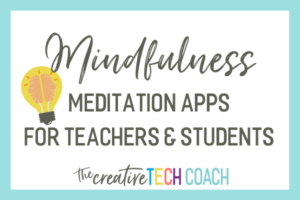Since I’ve gotten into the meat of this program at Liberty University, I’ve heard so much about the use of social media in education. At first I couldn’t imagine how or why anyone would use a social networking site like Facebook in the classroom, but I’ve learned some interesting ways to use social media for educational purposes and the reason why.
One of the largest reasons why we should consider using social media for educational purposes is social media has become a staple in the lives of many Americans, especially American teens. In 2012, Common Sense Media reported that 90% of teens had used social media. This year, Lenhart (2015) reported that 91% of teens say they go online daily and 71% of teens use more than one social media site, Facebook being the most popular.
Other reasons for using social media are suggested by researchers and respected educators. Ryberg and Christiansen (2008) support using Web 2.0 tools and social media for collaborative learning. Likewise, Sheninger (2014) values social media for all of the following: “effectively communicating with stakeholders;” “establishing a consistent public relations platform;” “developing a brand presence that promises value;” “authentically engaging students in the learning process;” providing cost-effective professional development that is meaningful;” “discovering opportunity for [his] school;” and “rethinking how the learning environment was structured” (p. 69). Further, Roura-Planas (2010) also examines the benefits for using social media to teach English to students who are English language learners.
This latter piece of research really piqued my interest because I teach an immersion program for English Language Learners. Additionally, the percentage of ELLs in American classrooms continues to be on the rise (Kena et al., 2015). I conducted a literature review for another course on the use of social media in the ELL classroom. My major source of information, Langer de Ramirez (2010), suggests that Web 2.0 tools are useful for engaging and scaffolding ELLs. Originally, I wouldn’t thought it possible or even plausible to use social media in the classroom, especially my 2ndgrade classroom; but Langer de Ramirez (2010) explains how to integrate Web 2.0 tools, including blogs, wikis, podcasts, videos, visual media, social networking, social bookmarking, and virtual worlds, for English language instruction, and how to use them with all grade levels.
Of the different ways to effectively and creatively use social media, I have my favorites that I could adapt for my students. I like the idea of using Facebook to create a profile based on a favorite story character. Summarizing a story in a tweet is another idea I liked. I also heard about a site called Tweet Fake (http://tweetfake.com/) where you can actually create a fake tweet. Edmodo is great social media site for educators that could be accessed without fear of being blocked. And, as I’ve mentioned previously, I’ve recently learned about the wealth of professional development available on Twitter, so I use it for myself.
Despite all the excitement around social media use in the classroom, we need to proceed with caution, especially in regards to educational confidentiality. While some students in middle or high school may be on social media, there may some parents that don’t allow their children to use social media. Further, we must address questions of whether parents would want students’ educational information (e.g. answers to questions or specific assignments) posted on social media. Permission forms and specific privacy settings can address some of these issues, but much consideration should be given before jumping on the social media bandwagon.
In a previous post, I think that churches can use easily us social media. Social media is a quick way to inform people about events and to send devotions or scriptural encouragement. While we do not want to get away from the intimacy of face-to-face interactions, social media can be used to spread the word of God’s kingdom, reaching people in a way that we haven’t been able to before.
References
Common Sense Media. (2012). Social media, social life: How teens view their digital lives.
Retrieved from Common Sense Media website: https://www.commonsensemedia.org/research/social-media-social-life-how-teens-view-their-digital-lives
Kena, G., Musu-Gillette, L., Robinson, J., Wang, X., Rathbun, A., Zhang, J., Wilkinson-Flicker,
S., Barmer, A., and Dunlop Velez, E. (2015). The Condition of Education 2015 (NCES
2015-144). U.S. Department of Education, National Center for Education Statistics.
Washington, DC. Retrieved from http://nces.ed.gov/pubsearch.
Lenhart, A. (2015). Teens, social media & technology overview 2015: Smartphones facilitate shifts in communication landscape for teens. Retrieved from Pew Research Center website: http://www.pewinternet.org/files/2015/04/PI_ TeensandTech_Update2015_0409151.pdf
Roura-Planas, R. S. (2010). Social networking sites as technology enhanced learning
communities towards autonomous language learning. Paper presented at the CiDd: II Congres Internacional de DIDACTIQUES 2010 [CiDd: Teaching II International Congress 2010]. Girona, Spain. Retrieved from http://hdl.handle.net/10256/2926
Ryberg, T., & Christiansen, E. (2008). Community and social network sites as technology
enhanced learning environments. Technology, Pedagogy and Education, 17(3), 207-219. doi: 10.1080/14759390802383801
Sheninger, E. (2014). Digital leadership: Changing paradigms for changing times. Thousand
Oaks, CA: Corwin



